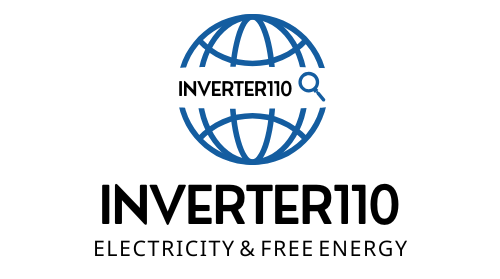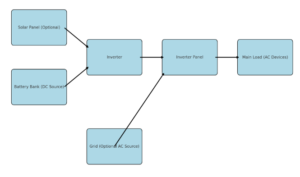Inverter Panel: A Comprehensive Guide
Introduction
inverter panel Power reliability is essential in today’s world, where even a momentary outage can disrupt work, production, and essential services. This is where inverter panels come into play. They are central to many modern power systems, ensuring a seamless supply of electricity during grid failures and enabling renewable energy integration.
An inverter panel is a key component in any setup that uses an inverter, such as solar power systems, battery backups, and uninterrupted power supplies (UPS). It houses the inverter along with supporting electrical components. Together, they convert direct current (DC) into alternating current (AC), manage loads, protect circuits, and facilitate safe operation and control of the power supply.
This guide explains how inverter panels work, their components, types, and applications, as well as installation tips, maintenance, and emerging trends.
What Is an Inverter Panel?
An inverter panel is a control and distribution unit that supports an inverter in a power system. It contains switches, circuit breakers, fuses, relays, meters, and other electrical equipment that ensure the safe and effective operation of the inverter. It’s designed to interface with power sources (like solar panels or batteries), distribute AC power to loads, and protect the system against electrical faults.
Think of it as a centralized hub that allows an inverter to function safely and intelligently within a system.
How Does an Inverter Work?
To understand inverter panels, it’s important to first understand inverters.
An inverter converts DC power (from sources like batteries or solar panels) into AC power, which is the standard form of electricity used by most appliances and machines.
There are several types of inverters:
Pure sine wave inverters: Deliver smooth AC output, suitable for all appliances.
Modified sine wave inverters: More affordable but less efficient for sensitive electronics.
Square wave inverters: Basic and mostly obsolete, due to their incompatibility with most devices.
Inverter panels facilitate this conversion process while ensuring that all the connections, loads, and safety measures are in place.
Key Components of an Inverter Panel
An inverter panel typically includes:
1. Circuit Breakers and Fuses
These protect the system from overcurrent and short circuits. Breakers can disconnect the inverter if something goes wrong.
2. Contactor or Relay
Used for switching purposes, they help in managing power distribution across different loads.
3. Isolation Switches
They allow the manual disconnection of the inverter for maintenance or safety purposes.
4. Meters and Indicators
Digital or analog meters measure voltage, current, and frequency. Indicator lights show the status of the inverter (ON, OFF, FAULT, etc.).
5. Surge Protection Devices (SPD)
Protects the system from voltage spikes due to lightning or other grid issues.
6. Battery Connection Points
For inverter systems using batteries, the panel includes connectors and safety features for managing DC input.
7. Cooling Fans or Vents
To prevent overheating, especially in high-capacity or industrial systems.
8. Programmable Logic Controller (PLC) or Microcontroller
In advanced systems, a controller automates switching, fault detection, and communication with other devices.
9. AC and DC Busbars
They distribute power from the inverter to multiple circuits efficiently.
Types of Inverter Panels
Inverter panels come in different configurations depending on the application.
1. Solar Inverter Panel
Used in solar PV systems. It connects the solar panels, batteries (if present), and the grid or load. Includes charge controllers and often integrated monitoring systems.
2. Industrial Inverter Panel
Used in factories, data centers, and production facilities. Often part of a larger automation system. Built to handle large loads and complex switching.
3. Residential Inverter Panel
Compact, user-friendly panels used in homes. Usually paired with an inverter and battery to back up essential loads like lights, fans, and computers.
4. Grid-Tied and Off-Grid Panels
Grid-tied panels connect the inverter to the main utility grid. Often include net metering setups.
Off-grid panels are standalone systems, often used in remote areas, with a focus on self-sufficiency and storage.
Applications of Inverter Panels
Inverter panels are used across various sectors:
1. Homes
Used in backup power systems to ensure basic electrical functions continue during blackouts.
2. Offices and Commercial Buildings
Ensure continuous power to computers, servers, lights, and communication systems.
3. Solar Power Plants
Coordinate multiple inverters and optimize power delivery to the grid.
4. Telecommunication Towers
Require uninterrupted power. Inverter panels manage solar, battery, and grid integration.
5. Hospitals and Critical Facilities
Life-support and diagnostic systems can’t afford downtime. Inverter panels keep emergency loads running.
6. Factories and Automation Systems
Manage motor drives, process controllers, and other sensitive loads.
Benefits of Using Inverter Panels
1. Power Reliability
They ensure continuous power, even when the grid fails.
2. Load Management
Can prioritize which circuits get power during outages.
3. Safety
Incorporate fuses, breakers, and surge protection to prevent damage.
4. System Monitoring
Built-in meters and indicators make it easy to track system performance.
5. Ease of Maintenance
Well-designed panels allow for faster diagnostics and repairs.
6. Scalability
Can be expanded or upgraded with additional components as needed.
Installation Considerations
Installing an inverter panel requires planning, especially for larger or grid-connected systems.
1. Load Assessment
Determine how much power is needed and for which appliances. This will guide inverter size and battery capacity.
2. Location
The panel should be installed in a dry, well-ventilated, and accessible area. Avoid places with direct heat or moisture.
3. Wiring
Use proper gauge wires and certified connectors. Incorrect wiring can lead to power loss or fire hazards.
4. Compliance
Ensure the setup follows local electrical codes and safety regulations.
5. Earthing
Proper grounding is essential to protect against shocks and surges.
6. Inverter-Battery Compatibility
Make sure the inverter and battery system are correctly matched in terms of voltage and current capacity.
Maintenance Tips
Proper maintenance extends the life of an inverter panel and ensures reliable operation.
1. Regular Cleaning
Dust and dirt can block vents and cause overheating. Panels should be cleaned every few months.
2. Inspect Wiring
Check for loose connections, corrosion, or insulation damage.
3. Battery Check
Ensure battery terminals are clean and electrolyte levels (for lead-acid batteries) are adequate.
4. Test Breakers and Switches
Operate all switches and breakers periodically to ensure they’re functional.
5. Firmware Updates
For smart panels or panels with controllers, install updates to improve functionality and security.
6. Thermal Scanning
In industrial setups, infrared thermography can detect hotspots or overloads.
Common Problems and Troubleshooting
1. Inverter Not Powering Up
Check input voltage from the battery or solar panel.
Inspect fuses and breakers.
2. No Output from Panel
Ensure output breakers are ON.
Check if inverter is in standby or fault mode.
3. Overheating
Check if cooling fans are operational.
Ensure vents are not blocked.
4. Frequent Tripping
Investigate for short circuits or overloaded circuits.
Review load settings.
5. Battery Not Charging
Confirm solar charge controller or AC charger is working.
Inspect battery health.
Emerging Trends in Inverter Panels
The inverter panel market is evolving with technology. Here are some trends shaping the future:
1. Smart Panels
Equipped with IoT features and Wi-Fi or Bluetooth connectivity. Users can monitor performance and receive alerts via smartphones.
2. Hybrid Panels
Combine solar, battery, and grid input intelligently to reduce electricity bills and increase energy independence.
3. Modular Systems
Panels are now more plug-and-play, allowing users to scale systems without complete rewiring.
4. Lithium Battery Integration
Inverter panels are being optimized for lithium-ion batteries, which offer better lifespan and efficiency than traditional lead-acid batteries.
5. AI-Based Load Management
Advanced systems use AI to predict usage patterns and adjust power flow accordingly, maximizing efficiency.
Choosing the Right Inverter Panel
When selecting an inverter panel, consider the following:
Power Rating: Match the panel’s capacity to your inverter and load requirements.
Input/Output Voltage: Ensure compatibility with batteries and grid voltage.
Build Quality: Use industrial-grade materials for long-term reliability.
Brand Reputation: Go for proven manufacturers with good support and warranty.
Ease of Access: Front-facing terminals and removable covers simplify maintenance.
Compliance: Look for panels that are certified by regulatory bodies like UL, CE, BIS, or IEC.
Cost Factors
The cost of an inverter panel depends on:
Panel Type (residential vs industrial)
Load Capacity
Smart Features
Enclosure Material (metal vs plastic)
Level of Customization
Integration with Other Systems (like solar or automation)
A basic residential inverter panel might cost between $100 to $500, while industrial panels can run into thousands depending on complexity.
Conclusion
Inverter panels are more than just enclosures—they’re intelligent hubs that manage and protect your power system. Whether you’re setting up a solar plant, a backup system for your office, or a home inverter, the panel you choose plays a vital role in safety, reliability, and performance.
By understanding how inverter panels work, what they include, and how to maintain them, you can ensure your energy system remains efficient, safe, and ready to power through whatever comes your way.



Terrific post however I was wanting to know if you could write a litte more on this topic? I’d be very thankful if you could elaborate a little bit further. Cheers!
Woah! I’m really digging the template/theme of this site. It’s simple, yet effective. A lot of times it’s very difficult to get that “perfect balance” between usability and visual appearance. I must say that you’ve done a awesome job with this. Also, the blog loads extremely fast for me on Opera. Outstanding Blog!